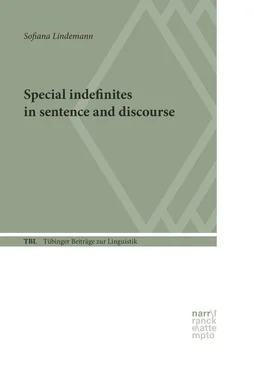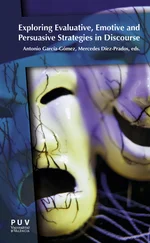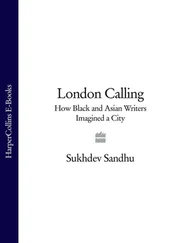| (8) |
Topic accessibility scale (Givón 1983) |
|
Zero anaphora > Unstressed/ bound pronoun or grammatical agreement > Stressed/ independent pronoun > R-dislocated DEF-NP > Neutral-ordered DEF-NP > L-dislocated DEF-NP > SECTION-movement NP (‘contrastive topicalization’) > Cleft/ focus construction> Referential indefinite NP |
The orientative scale in (8) shows, in the same way as the Accessibility Hierarchy (Ariel 1988), that an entity realized as a zero anaphor, or as an unstressed pronoun is an accessible topic and is most continuous in both the previous and the subsequent discourse, while the most inaccessible and discontinuous referents are realized by means of referential indefinite noun phrases.
Givón’s topic accessibility scale comprises not only different types of referring expressions, as full noun phrases or pronouns, but other subscales as well, as for example: (i) the scale of phonological size (e.g. stressed pronoun> unstressed pronoun), (ii) the word order scale (e.g. R-dislocation> L-dislocation), (iii) the scale of syntactic roles (e.g. subject> direct object), (iv) the passive/active scale (e.g. active> passive), (v) the scale of different indefinite grammatical markers (e.g. indefinite this > indefinite a/an in English); the scale of (vi) definite grammatical markers (e.g. the ga- vs. wa distinction in Japanese). By combining different syntactic coding devices, Givón (1983) and his colleagues offer a detailed account for the importance of multiple textual aspects in determining the topical status of referents cross-linguistically. The next Section is dedicated to the discussion of Centering Theory, a framework that integrated the two measures of topicality proposed by Givón in a formal model of reference processing.
The proponents of Centering Theory integrated Givón’s (1983) findings in a more formal model on topicality to account for referent tracking in discourse. This theory has its staring point in the work on attention focus in discourse and was developed at the beginning of the 1980’s within the framework of artificial intelligence. Firstly formulated by Grosz, Joshi and Weinstein (1995), Centering Theory was constantly adjusted and extended, most prominently by Walker and Prince (1996), Grosz and Sidner (1986) and was experimentally validated in the works of Brennan (1995) and Gordon and Chan (1995), among others. Assuming that within a discourse attention is focused or centred, the independent notion of “center” was introduced1. The “center of attention” of a discourse segment is accounted for in terms of focus of attention, choice of referring expressions and the perceived coherence between two adjacent sentences (Walker et al. 1998: 1). This relationship mirrors the formulations presented in Givón (1981, 1983) as that between the “set of potential antecedents” and the “anaphor” and integrates both referential distance and topic continuity as measure methods for topicality. Except for few works (Passoneau 1994, Grosz et al. 1995, Walker, Joshi and Prince 1998), the main concern of Centering Theory is the local or sentence-level relation that holds between the centers of attention in a given discourse segment. In other words, Centering Theory has a predictive power on the relations that hold locally, between two adjacent sentences.
Proponents of this model suggest that speakers form referential predictions on a clause-by-clause level, in the same vain as Givón (1983). The model introduces two sets of focused discourse referents (i.e. ‘centers’): the backward-looking center and the forward-looking center. The backward-looking center (Cb) is the most prominent discourse referent in both the current and the previous utterance. In English, the Cb position is generally associated with the subject of the current utterance. Intuitively, the Cb is the discourse entity that is the center of attention of the current utterance, being psychologically the most salient discourse referent for both speaker and hearer. The Cb is the local discourse topic and is identical to the preferred center of the immediately following sentence in an ideal discourse. In order to achieve a coherent discourse, the identity of the Cb has to be determined for each utterance. The only exception is the first sentence of a discourse segment, which does not contain a Cb, as discourse-initial utterances are interpreted as context-creating devices and not context elaborating ones (see Lambrecht 1994: 129 for a similar argumentation).
The second type of center is the forward-looking center (Cf), which is a list of competing discourse referents in the current utterance that are ranked according to several factors. In classical Centering Theory, referents on the Cf list are ranked according to their syntactic position. According to this ranking, in German and English, for example, the referent in subject position is ranked higher than the referent in direct object position, which, in turn, is ranked higher than the referent in indirect object position. Thus, a referent mentioned in subject position enters the list of Cfs as the highest ranked, preferred center (Cp), which is the most expected Cb for the next utterance. Thus, the theory predicts that a referent encoded in subject position is more prone to be mentioned in the immediately following sentence by virtue of its preferential syntactic position. Different instantiations of Centering Theory propose various other factors (e.g. animacy, clausal subordination and the lexical semantics of the verb) for the ranking of centers on the Cf list. Walker et al. (1998) note that the complete set of factors influencing the ranking of Cfs has yet to be determined. The interplay between the centers of two adjacent utterances is illustrated in example (9) for two sentences, U iand U i+1.
| (9) |
Relationship between the Cf and the Cb |
|
Utterance Ui: Mary gave Diana a cat. |
|
Utterance Ui+1: She told her that… |
The first sentence, U i, introduces two human female referents, Mary and Diana and one animate referent, a cat . These three referents compete for being rementioned in the next utterance and are thus represented on the list of forward-looking centers. The referent encoded in the highest syntactic position, the subject, is the most prone to be mentioned next and is thus the Cp for the next sentence, U i+1. Accordingly, the first pronoun in the second sentence is preferentially interpreted as referring back to the Cp, Mary , than to the second ranked referent on the Cf list, Diana .
In Centering Theory, transitions from an initial utterance U ito a second utterance U i+1are categorized according to the established relations between the centers. If the backward-looking center remains the same across utterances, the model outputs continue for the transition from U ito U i+1. If the backward-looking center remains the same but is no longer the preferred center in U i+1, the model outputs the transition relation retain. Finally, if a new backward-looking center is introduced in U i+1, which is different from the old one in U i, the model outputs a smooth or rough shift , depending on whether the Cp remains the same or not . Center continuations, or transitions between utterances in which the backward-looking center is continued, are preferred in a coherent discourse. In contrast, a shift of the backward-looking center is dispreferred.
It is important to note that one of the differences between Ariel’s (1990) Accessibility Marking Scale and Centering Theory is that the two approaches make different predictions. For example, while Ariel’s model predicts, on the basis of four textual factors (i.e. distance, unity, competition and saliency), the type of referring expression that will be used for a particular referent, Centering Theory is primarily concerned with the referent that is most likely to be mentioned next as the most important or topical constituent. In other words, Centering Theory is more interested in the factors that contribute to the likelihood of subsequent mention of a referent. The type of referring expression used to pick up a referent in the subsequent discourse is considered a by-product of a referent’s expectancy to be mentioned next. The theory predicts that a Cb must be realized as a pronoun if any member of the Cf is realized as a pronoun, or if the Cb in the previous clause is realized as the present Cb as well.
Читать дальше












